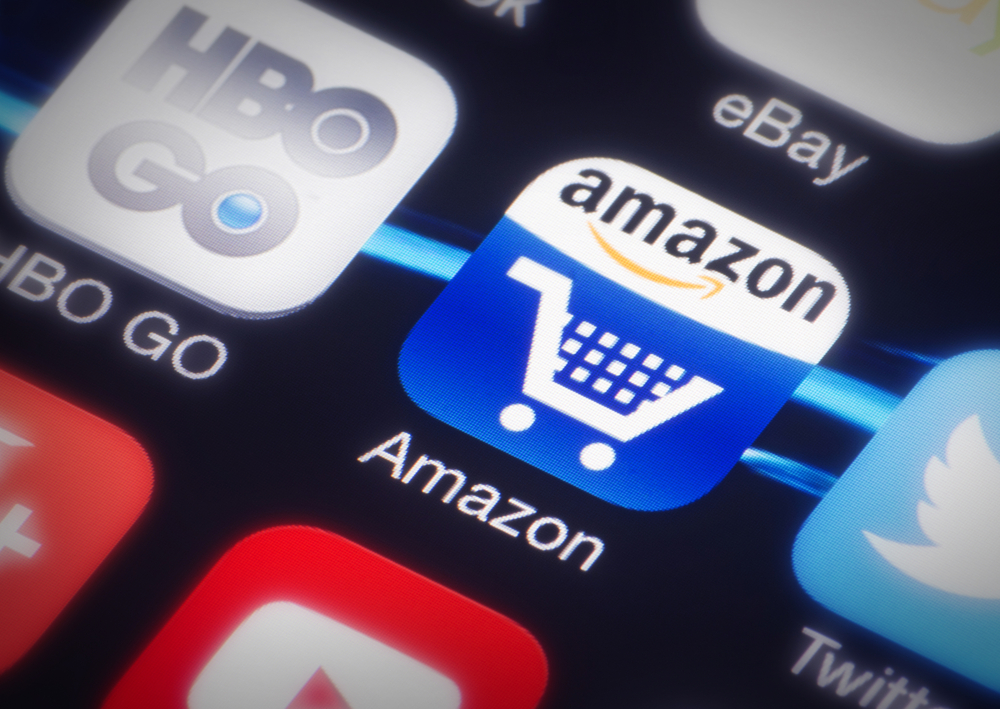
That’s some serious wifi connection.
Most think a lifestyle business is raking in a ton of money while working only “4 hours” a week.
The truth is it is a way of being and a way of feeling more than anything. A life full of choices and opportunities where you’re truly living on your own terms. It doesn’t have to be complicated, and a true lifestyle business usually is not.
For many, a lifestyle business simply means being able to work for themselves and make enough to enjoy life. Whether that looks like $40K a year or $400K, it’s about taking your life back. It’s the emphasis on putting the “lifestyle” into your business.
You do things you want to do because you want to do them. Working hard and doing what you want are not mutually exclusive.
You travel where you want to go, because you want to go there. Or stay in place because all you want is more time around friends and family.
You decide what your day looks like because you’re the boss and you make the decisions. You are no longer tied to the stress of your employer or the office politics of your coworkers. Your business depends on you. When something isn’t going right, there’s no one to answer to but yourself.
You are not a “9 to 5.” Maybe you’re a 12am – 5am, maybe you’re a 8am – 12pm. Maybe you will still work 9 to 5 because YOU want to. Your life and your business is not restricted to social constructs. You’re able to build your business around what’s best for you, and when you play to your strengths rather than fighting your nature, you’ll be happier and more productive. You are constantly growing, experiencing, learning, and living.
Think about it like this (and if you’re an over-achiever draw this out)…

The outer edges are things that are taking up your life that you don’t want to do. (Take the time to list out these things.) As you get to the closer circles to the center, those things are better in alignment with what you want to be doing, but not ideal.
The bullseye of the target would be your ultimate “flow” state. The Zone. This is the area where all magic happens. It’s all of the things you LOVE to do and where you “feel” the best. These are things that you are passionate about.
Here are some of mine: creating, playing and being a kid, playing sports, being in the woods, brainstorming, dancing, laughing, being active, going on adventures, traveling, eating, reading, doing yoga, mediating, being intimate, helping someone out, creating a movement, supporting, singing, biking, etc. The list goes on for awhile!
Before my lifestyle business, I was spending about 10% in the Zone and I didn’t realize why I was depressed. Now, I spend about 75% of my time in the zone because I have the freedom and understanding to do so. I don’t have to tell you how much better a life it is to spend more time in the zone.
In my opinion, this is the ultimate currency. I don’t care if you have a billion dollars and the hottest wife or husband anyone has ever seen. It only matters how you feel, and I’ve seen a lot of millionaires feel like shit! More time in the zone = a better life and its as simple as that.
This is what a lifestyle business seeks to accomplish.
How do you crack the code and get into the zone? Well, we finally live in a world that has closed the gap and broken down the barriers to help get you there financially. These days, I see people making money doing almost anything (a professional Vine twerker? Slighty NSFW, obviously).
Here are my top 5 that have the true leverage and independence I’m looking for (no twerking required):
1. Mobile Apps

This one isn’t a surprise to anyone 😉 Obviously this is one of my main models. It’s one of the most lucrative options because it’s HOT right now (and will be for years to come). I’ve said it before, but mobile apps are still in their infancy but the time to get in is NOW.
There is so much more to come and I am excited every time I talk about it with people. Apps will soon be apart of every product (as you’re seeing with homes and watches and TVs, to name a few).
The first steps to getting into apps is deciding what model you want to pursue. To simplify things, I’m going to break down apps into 3 models: reskinning, high-retention apps, and startups.
Reskinning allows you to start on a much smaller budget, and provides more room for error. It’s like using a website template and then adding sick features and customizing it to your specific audience. You added value and created a completely new user experience, but you saved on foundation costs. The ROI is fast, but you need to stay on top of market demand to be successful.
High-retention apps are apps built specifically to acquire large userbases and continually have those users return for feature updates and loyalty. These are BIG app projects that typically have larger budgets. If done right, these can be wildly successful and you’ll need to develop less apps in your portfolio to make your ROI.
Startups are apps that typically received funding and built a company to launch and continually update the app. These are the Snapchast, Tinders, and Vines of the world. Yes, all those received funding prior to launch despite the seemingly “overnight” success stories.
Once you decide on a model, focus your efforts there. It’s rare to see people successful at trying to spread themselves across multiple models, but what I do see often is people reskinning apps, building up revenue, and using their net revenue to start larger, high retention app projects.
Pros: Fast ROI, growing Marketplace (every business is moving towards apps), 24/7 worldwide audience, automation.
Cons: It’s challenging to find a team that execute on what you want, consumer behavior changes fast, Apple gets finicky and changes their algorithm when they feel like it.
Cost: As little as $500 – as much as you want to spend.
2. Become an Amazon Seller.

This is the other business I’m most excited about right now. I just started selling physical products on Amazon, and the similarities between the Amazon store and the App Store are incredible – which is why this model fits so well into my current business. It’s an amazing advantage if you understand the app business at all.
I’m able to find the best products by searching the top listings (“top charts”) and emulate existing successful products because it’s all right there in real time. I outsource production using a quality supplier that you can find through Alibaba.com (“oDesk”) and customize the user experience by building my own brand around what I love.
It’s been extremely rewarding delivering physical products to customers around the world. Entrepreneurs around the world are doing this with huge results. I recently was talking with a retired police officer who makes about $200K per month as an Amazon Seller. I have never seen so many newbies making that amount of money.
Note: I took a course that taught me how to do this, and I wanted to share it with you. There will be a special live webinar with the guy who taught me this system on Friday (October 17), just for the App Empire community. So stay tuned for that registration email on Wednesday! If you haven’t already checked out the informational videos, you can find the latest here.
Pros: Can be a very simple lifestyle biz, establishing a brand for a BIG exit, Automation, fastest and largest growing marketplace, Amazon ships and fulfills everything.
Cons: You have to put in the time to find the “right” supplier and products.
Cost: Cheap depending on your initial product. Suppliers will typically go as low as 200 minimum order quantity, so it depends on the wholesale price of what you’re selling. Then listing your product for $5-$40 on Amazon is the sweet spot.
3. Affiliate Marketing

Anyone can get involved in affiliate marketing, even if this isn’t your main business model, but I know people who’s sole source of income is through affiliate marketing. This is especially great if you are super knowledgeable about a particular topic, but don’t want to create your own products. Instead, you’d rather blog and create free content then notify your community about great products you find. Whether that’s the latest raw protein powder or a new mobile app course, you can create solid income from promoting others’ products that you already use!
Others use FB advertising that converts into a sale. Note: Knowledge of advertising on these platforms is important. You can’t just throw up an ad and make a sale.
First thing is first, you’ll need to start building a community. Whether that’s through blogging, an app, Instagram (hot right now & growing!), YouTube, or a combination of platforms, you’ll need to start building your list. Every one has information that’s valuable to others, you just need to figure out what you can bring to the table. You can get started by searching for companies on Clickbank or Commission Junction who are looking for people like you to promote their services or products.
This model takes time as you need to build up your community and get your name out there within your niche network, but can produce some serious income once you start partnering with bigger companies and building targeted partnerships.
Pros: Fast, you don’t have to build a product, based a lot on relationships and what’s trending now.
Cons: Takes time to find the right product/offering, it’s not a real business that can be sold, it’s dependent on someone else so you have to be super careful about how you promote.
Cost: Pretty cheap to very expensive depending on how well you can convert existing traffic to sales.
4. TeeSpring.com

This is another model I’ve been involved in lately. It’s a t-shirt selling platform with a Kickstarter vibe. You design graphics for t-shirts or other clothing, start a campaign, set a minimum quantity of orders, and send traffic to your page through online ads (like Facebook). The campaigns only last for a predetermined amount of time (7 to 30 days, your choice) so this platform is about relevant and timely designs. Once that minimum quantity is hit, your order is placed and TeeSpring does all the heavy lifting by printing, shipping, and providing support to your customers for the cut they take. The best part? It’s free to make a campaign so you won’t be charged anything if it doesn’t sell.
This model is particularly effective through targeting niche markets or current events. Think: cat-loving grandmas in Mississippi or the funniest new YouTube video sensation. I suggest hiring a great graphic designer, because quality still matters.
Pros: CHEAP! You only spend money on ads, flex your creative muscles.
Cons: It’s hard to get long-lasting conversions on something (trends) that change so fast. You need to create ads that convert.
Cost: You just pay for ads that convert typically on FB or IG.
5. Online Marketing

This is a very broad option – which is great – because you’re able to really cater to your own personal creativity and passions. My passion was sharing how I created wealth through lifestyle businesses so I created products outlining how I did it. I was successful, and continue to be successful in new businesses, because people share their knowledge with me. Others may start their own development companies or consulting services. Maybe you love writing or graphic design. Maybe you want to start your own clothing or organic products line. The point is leveraging technology to work with your passions.
The best thing you can do to take your online business off the ground is stay thirsty and always seek more information. Find a mentor, attend conferences, join a mastermind, take a course or read a new book. One thing I’ve learned is that knowledge and staying attentive to the market is everything in this business. It may seem like a simple concept – but the majority do not take the time or give up easily.
You don’t have to be the majority.
Pros: Branding and exit potential, quick cash flow once its set up, audience all over the world, flexibility.
Cons: Can have some technical hurdles, need to really familiarize yourself with your market.
Cost: Starts cheap for hosting, domains, and websites. Costs grow as you grow.
Honorary Mention: Don’t Forget about Crowdfunding
Launch your ideas through Kickstarter or Indiegogo. I know people who routinely do this over and over. I recommend scheduling a talk with crowdfunding experts on Clarity.fm to get started.

